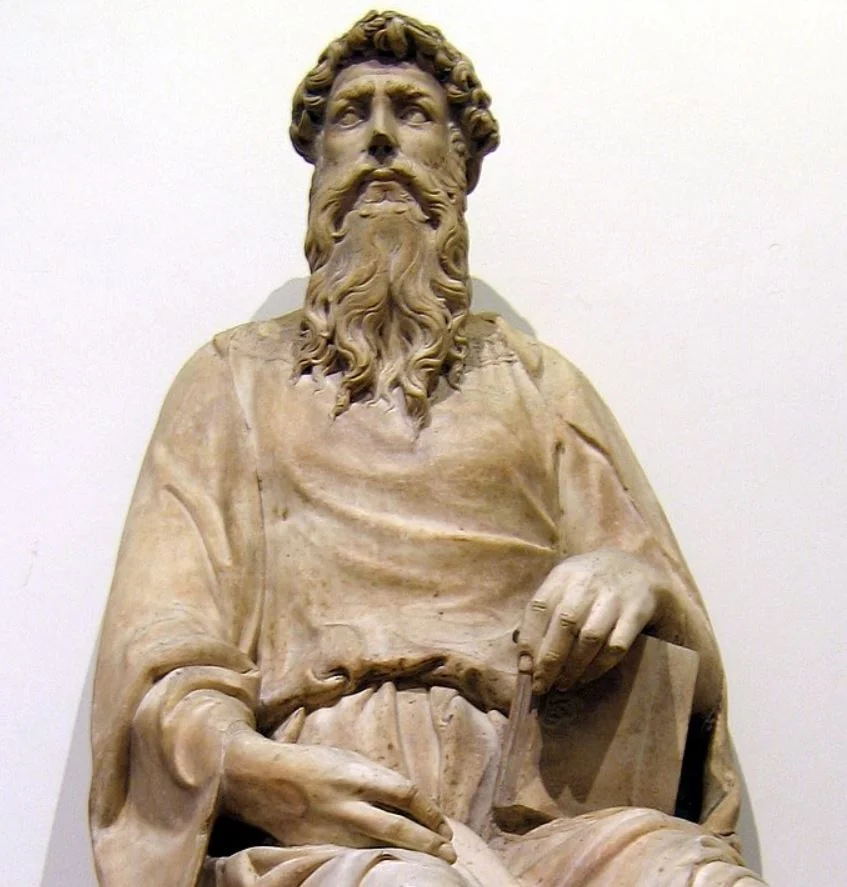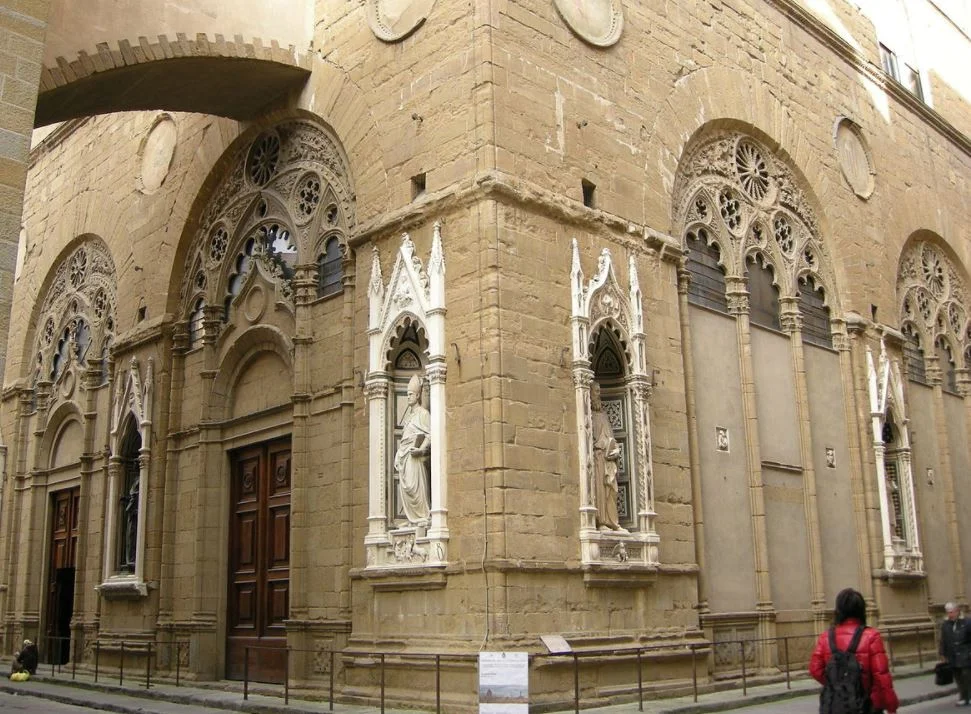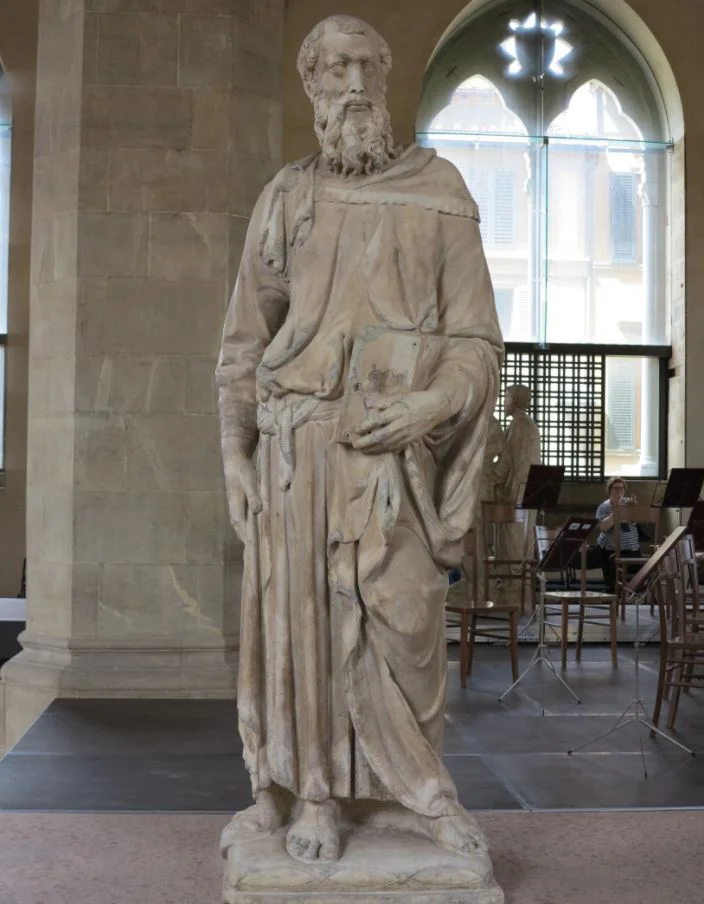One of the most fascinating sculptures in the oeuvre of Donato di Niccolò di Betto Bardi (1386-1466), better known as “Donatello,” is a fascinating statue depicting Mark the Evangelist.
In this article, we’ll take a closer look at some of the most interesting facts about Saint Mark by Donatello, one of the artworks that signified a transition between two eras!
1. It was one of Donatello’s first commissions
Donatello was an Italian sculptor who was born in the year 1386, pretty much in the early stages of the Renaissance. It was a period that new styles in art were developed, and Donatello paid a major contribution to the movement, eventually becoming one of the most influential artists of the Renaissance.
Born in Florence, he was very much influenced by the classical sculptures that he had studied together with his mentor Filippo Brunelleschi in the early 15th century in Rome.
His first works were a collaboration with Lorenzo Ghiberti (1378-1455) with whom he sculpted statues to decorate the north doors of the Florence Baptistery.
The statue of Saint Mark was completed between 1411 and 1413 and was one of his first commissions. He was in his mid-twenties at the time and as his work from this period showed, a master sculptor already.

2. He created 2 more statues of saints during this period
His first major commission during this period in his life was a seated statue of Saint John the Evangelist. He completed this magnificent work of art between 1409 and 1411. originally decorated a niche in the old façade of Florence Cathedral, but is now on display just nearby at the Museo dell’Opera del Duomo.
The other famous work that he completed during the 1410s was the statue of Saint George. This one was completed in 1417 and was commissioned by the guild of the Cuirass-makers, together with the statue of Saint Mark. This statue can be found at the Bargello Museum in Florence.
While all these sculptures are of extremely high quality, the seated statue of Saint John the Evangelist is considered to be the prelude of the ideals of the Renaissance, in search of naturalism and the depiction of human feelings.

3. It was commissioned to decorate a church in Florence, Italy
The statue of Saint Mark is part of a commission of 14 different statues ordered by the various guilds of Florence at the time. These sculptures were then placed in 14 exterior niches of a church in Florence.
This fascinating church is called “Orsanmichele” which pretty much translates to “Kitchen Garden of St. Michael“. It’s located right in the historical heart of Florence, just north of the Piazza della Signoria and the Palazzo Vecchio.
Saint Mark was commissioned by the “Arte dei Linaiuoli e Rigattieri,” or the guild of the “linen-weavers and peddlers.” All 14 niches of the church eventually ended up being filled by sculptures, a process that took over 3 decades between 1399 and 1430.

4. The niche by itself is a work of art but not of Donatello
The church was originally constructed as a grain market in 1337 on the kitchen garden of the monastery of San Michele, which doesn’t exist anymore and is how the church got its name.
This old building was eventually transformed into a church between 1380 and 1404 as the main church of the guilds of Florence.
During this transformation project, 14 niches were carved out of the exterior of the building to become the resting place of the commissioned sculptures. This wasn’t the work of any of the sculptors but presumably by two stone carvers by the name of Perfetto di Giovanni and Albizzo di Pietro.
They deserved to be mentioned in this article as they did a pretty good job!

5. There was initially a big problem with the statue
One of the most remarkable facts about the statue of Saint Mark by Donatello is that the guild that commissioned it originally rejected it. They considered it to be unnatural as both the head and torso were sculpted larger than life-sized.
What they didn’t take into account was the fact that Donatello did this on purpose because the niches of the church are situated well above street level, so it would appear completely natural there.
Donatello promised the guild to make adjustments, placed the statue in its final resting place without touching, and made the members of the guild look at it there 15 days later. The complaints seized right there, even though the sculptor didn’t do anything all this time.

6. The work has been praised for its realistic features
One of the most intriguing features of the statue is that Donatello sculpted it in such a way that it was a complete transition from the unnatural and idealized Gothic artworks of the Middle Ages.
The level of detail must have been astonishing at the time and in sheer contrast to the idealized sculptures of the Gothic era. This is perfectly reflected in the veins that show on Saint Mark’s left hand as he holds his book.

7. It’s considered to be one of the first Renaissance sculptures
While Donatello’s first solo commission, the seated sculpture of Saint John the Evangelist, still exhibits traces of the symmetrical and idealized style that was common in Gothic art, the statue of Saint Mark completely moved away from that.
The depicted man leans on his right leg and his left leg is slightly bent, a feature he clearly copied from sculptures of ancient Rome. On top of that, his drapery is depicted in a completely realistic manner, something unseen in the art of the Middle Ages.
Because of these elements, this sculpture is sometimes referred to as the “first Renaissance monument,” quite an amazing title to hold!

8. The statue in the niche today is a replica of the original
Even though the statues in the 14 niches of the fascinating church in Florence are still in place, these are merely replicas of the original ones.
Together with multiple other original sculptures of the early 15th century, the statue of Saint Mark is held at the museum of the Orsanmichele church in Florence.

